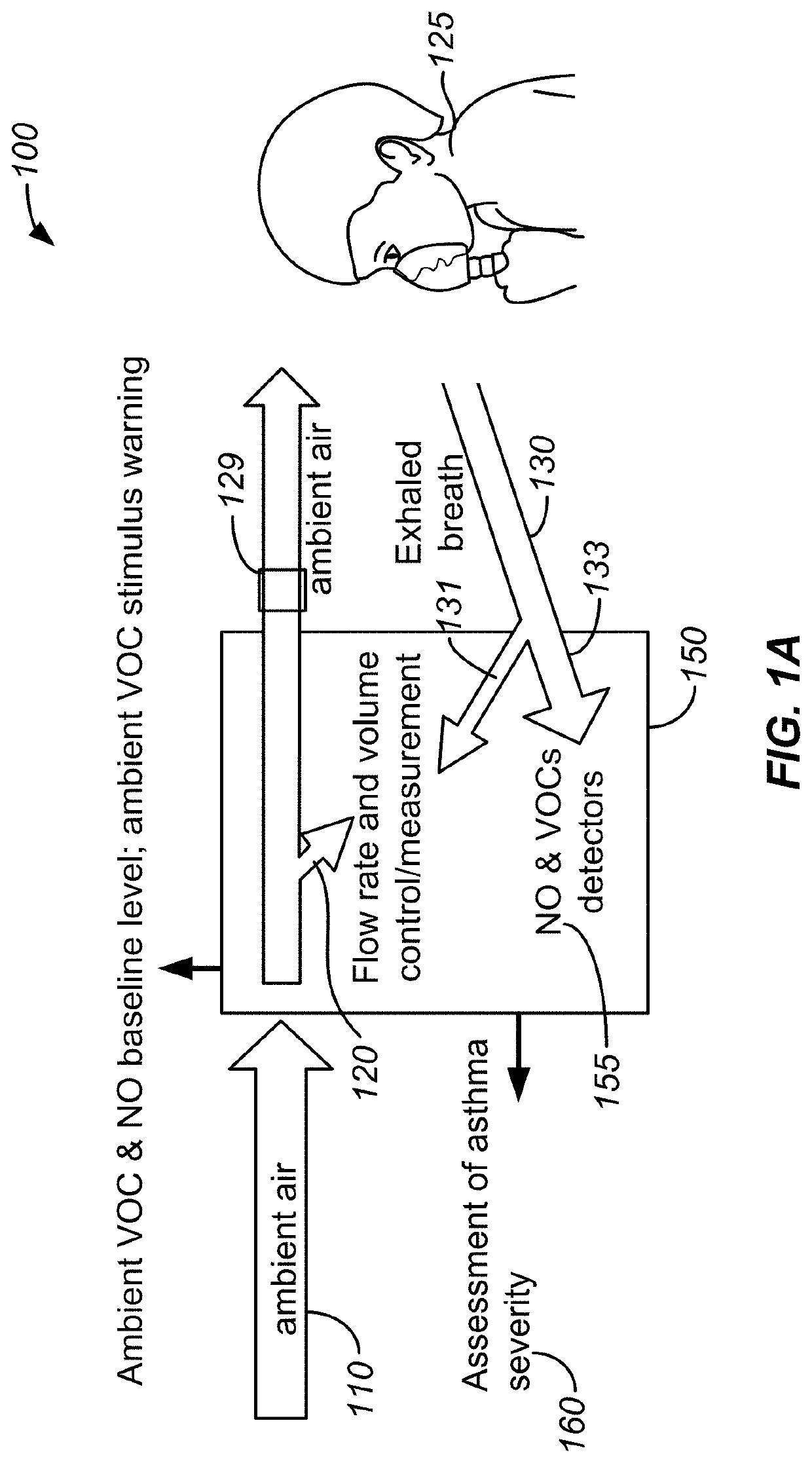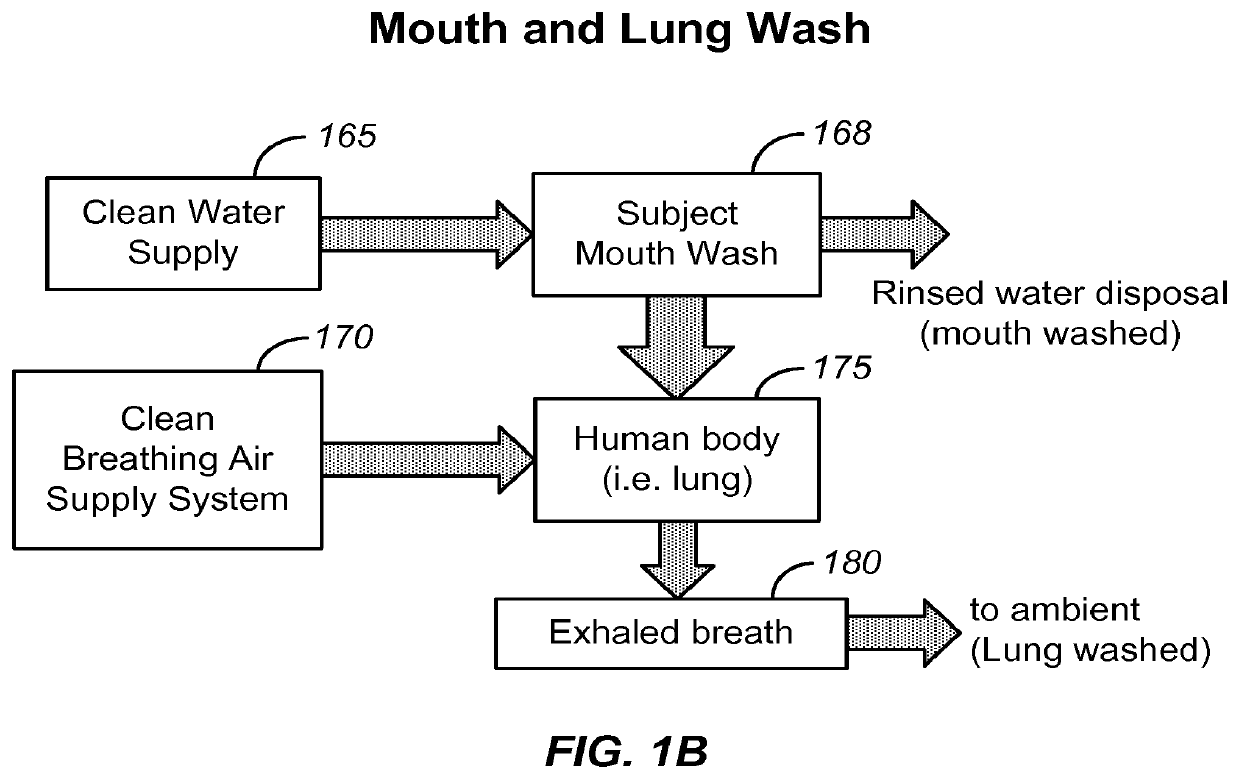Breath analysis systems and methods for asthma, tuberculosis and lung cancer diagnostics and disease management
a technology for lung cancer and lung cancer, applied in the field of lung cancer diagnostics and disease management, can solve the problems of large size of current gas analysis systems, difficult operation, large equipment, etc., and achieve the effect of effectively managing and controlling the treatment of tb patients
- Summary
- Abstract
- Description
- Claims
- Application Information
AI Technical Summary
Benefits of technology
Problems solved by technology
Method used
Image
Examples
example 1
A clinical trial is conducted to differentiate grades of asthma severity as assessed according to the 2007 National Asthma Education and Prevention Program (NAEPP) guidelines. These guidelines are described in the National Heart, Lung, and Blood Institute NAEPP Expert Panel Report 3: Guidelines for the Diagnosis and Management of Asthma, Full Report 2007. Using the guidelines in Expert Panel Report 3 (see, FIGS. 9A-B) impairment and risk of 600 patients are assessed and classified into 1) Intermittent; 2) Mild; 3) Moderate; or 4) Severe. The Expert Panel Report 3 indicates that 153 individuals have Intermediate asthma; 101 individuals have Mild asthma; 256 are Moderate asthma and 90 are Severe asthma.
After the severity of each patient's asthma is classified according to the 2007 NAEPP guidelines, breath samples from the 600 asthma patients are obtained. Levels of nitric oxide and volatile organic components (VOC), including the compounds 4-methyloctane, 2,4-dimethylheptane, isopropa...
example 2
Breath samples from 150 asthma patients and 50 non-asthmatic healthy controls are obtained. As described in Example 1, marker levels are measured, and spirometry is performed. Using the trained and validated sensor array, 150 asthma patients can be classified by degree of severity.
Using the trained sensor array, the asthma severity level is predicted for each of 200 patients. The asthma severity level of each of the 150 patients is thereafter classified by the 2007 NAEPP guidelines, and the results are compared. The sensitivity, specificity, and accuracy of the algorithm is compared to the results of Example 1.
example 3
A sensor array is developed to identify tuberculosis infection by measurement of VOC levels in a patient's breath, sputum and sputum culture.
Breath and sputum samples from 200 patients with active tuberculosis, 200 patients with latent tuberculosis, and 100 healthy controls are obtained. A definitive diagnosis of tuberculosis is made by culturing Mycobacterium tuberculosis organisms from a specimen taken from each patient.
Levels of the markers of volatile organic components (VOC) including off-gasses from Mycobacterium tuberculosis or Mycobacterium bovis are measured from specimens from each of the 500 patients. The results are adjusted by the concentration of the markers in the ambient air. Using these samples for each classification, VOCs are determined. A cohort of these samples (200) is used as a training data set of the sensor array, which serves as a basis, model, or template against which the features of an unknown sample are compared, in order to classify the unknown disease...
PUM
| Property | Measurement | Unit |
|---|---|---|
| flow rate | aaaaa | aaaaa |
| flow rate | aaaaa | aaaaa |
| flow rate | aaaaa | aaaaa |
Abstract
Description
Claims
Application Information
 Login to View More
Login to View More - R&D
- Intellectual Property
- Life Sciences
- Materials
- Tech Scout
- Unparalleled Data Quality
- Higher Quality Content
- 60% Fewer Hallucinations
Browse by: Latest US Patents, China's latest patents, Technical Efficacy Thesaurus, Application Domain, Technology Topic, Popular Technical Reports.
© 2025 PatSnap. All rights reserved.Legal|Privacy policy|Modern Slavery Act Transparency Statement|Sitemap|About US| Contact US: help@patsnap.com



